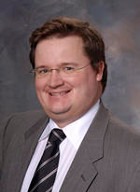On-Highway Batteries Serve as Emergency Backup Power
Audi and the utility EnBW are pioneering an energy storage facility built on retired electric vehicle (EV) batteries. This partnership is being billed as the solution to a major problem in each industry.

For automobile manufacturers, the question of how to recycle retired batteries has been pressing for some time. Utilities have been struggling with the perverse problem that excess generation from renewable sources has been slowing adoption, as surges from those sources can disrupt the stability of power grids.
EV batteries have a functional life of 3-10 years after they are retired from vehicle use, making them a ready tool for use by utilities.
Portland General Electric Company (PGE) also is seeking to create a more resilient grid for the utilization of renewable energy sources. They are launching a pilot program to incentivize the installation of home battery systems to act as a virtual power plant.





